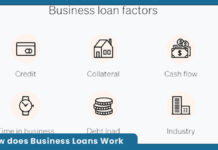How can I recover from a student loan default? Student loan default happens when borrowers fail to repay their student loans according to the agreed-upon terms outlined in the loan contract.

This failure to make payments can lead to serious consequences, including damage to credit scores and financial penalties.
The specific criteria for default may vary depending on the type of loan, but it generally involves missing payments for a certain period, typically several months.
What Happens Before Default?
Before your federal student loan enters default, it typically goes through a phase known as delinquency.
This happens when you miss a payment, and although your loan is considered delinquent, your servicer may not report it until after 90 days.
During this delinquency period, you have options to adjust your repayment plan or temporarily postpone payments until you can afford them again.
Private lenders may also offer options like forbearance or reduced monthly payments to help borrowers manage their loans.
How To Recover From A Student Loan Default
Here in this section of this content, we’ll guide you through the steps to recover from defaulting on both private and federal student loans.
Private Student Loan Default
If you have taken a private student loan, unfortunately, this type of loan doesn’t offer as many recovery options as federal student loans do. However, there’s still hope.
To recover from a private student loan default, you can start by reaching out to your lender as soon as you realize you’ve missed a payment.
Regardless of who your loan servicer is, prompt communication is key. They can guide you on the best steps to avoid default and discuss recovery options.
If you’re unable to find a solution with your lender, consider seeking assistance from a knowledgeable lawyer specializing in student loans.
Federal Student Loan Default
Unlike private student loans, federal student loans offer three effective methods for borrowers to recover from default. These strategies are recommended by the Department of Education and include the following:
- Federal student loan rehabilitation.
- Fresh start program.
Federal Student Loan Rehabilitation
If you opt for loan rehabilitation to recover from student loan default, whether it’s a FFEL or direct loan, you’ll need to fulfill certain criteria.
This involves making nine voluntary payments and agreeing to affordable monthly payments within 20 days for ten consecutive months, as per the terms provided in writing.
Your loan servicer will assist in determining the monthly payment amounts, typically based on your adjusted gross income and discretionary income exceeding 150% of the poverty level for your location and family size.
Once these calculations are completed, you’ll arrive at a suitable monthly payment plan.
Consolidation
Through a direct consolidation loan, you can effectively move past and overcome your loan default status. Here’s how it works: you’ll replace your existing federal student loan with a new one. But note that eligibility is required for this process.
To qualify, you can either make three consecutive, voluntary, and on-time monthly payments on the defaulted loan or opt for an income-driven repayment plan under the new loan.
While this method doesn’t erase the default from your credit history, you can still access federal student loan benefits.
Fresh Start Program
Here’s another avenue to rebound from student loan default: the Fresh Start Program. This federal initiative, launched by the Biden-Harris administration, aims to assist existing borrowers in getting their loans back on track.
It’s a one-time temporary program designed to support borrowers in resuming their ongoing payments. The Fresh Start Program offers several beneficial features that can aid you in your journey to financial stability.
How To Avoid The Consequences Of Defaulting
If you are scared of failing to pay back your private student loan or federal student loan, here are some helpful tips to help you avert this:
- Recognize your loan terms.
- Reach out to your lender if anything happens.
- Keep track of your loan online.
- Complete exit counseling.
- Record your loans.
By keeping a record or track of your loan, you will be able to find out if your repayment date is approaching or if you have missed a payment.



